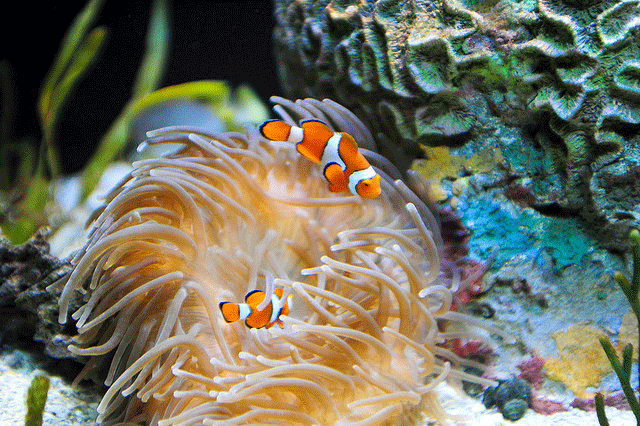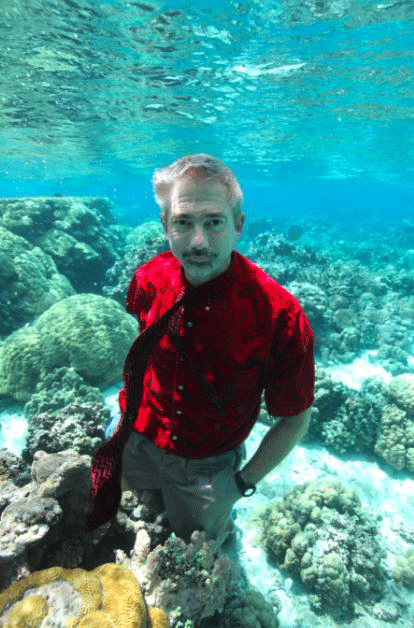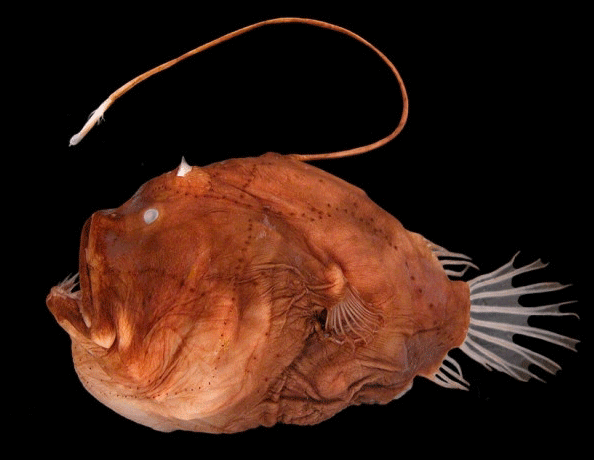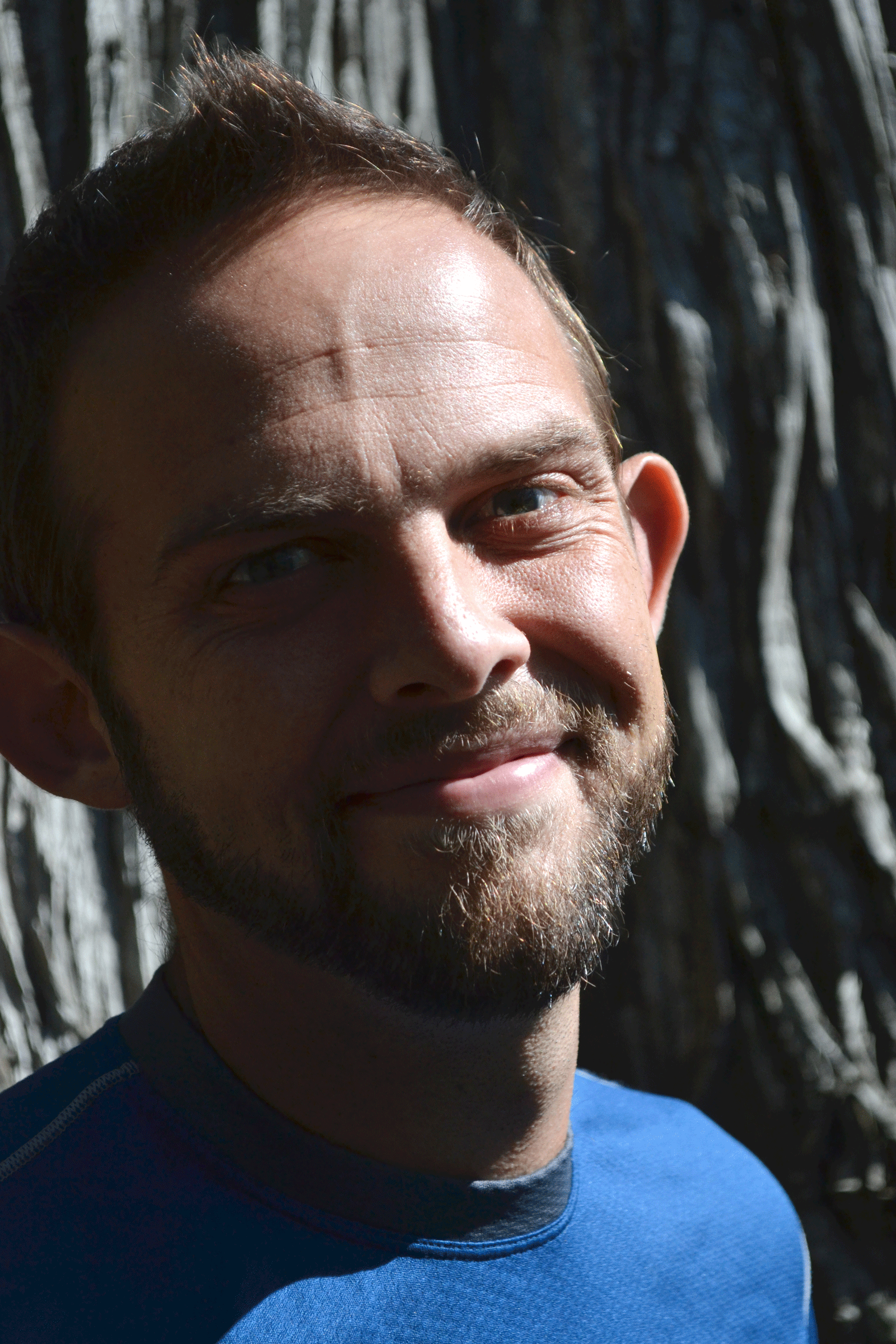The Extreme Life of the Sea
Air Date: Week of March 21, 2014

For clownfish, the bigger the better (Photo: Eddie.Welker, Flickr Creative Commons 2.0)
Life in the ocean is a longstanding mystery to most humans, and even now we can travel deep beneath the waves, we've barely scratched the surface. A new book, The Extreme Life of the Sea, sheds an entertaining and informative light on some of the ocean’s oldest, oddest, fiercest and strangest creatures. Coauthor and biologist Steve Palumbi discusses the work with Steve Curwood.
Transcript
CURWOOD: They say that a period at the end of a sentence represents how much or how little we know about the world’s oceans. This underwater universe seems alien to most of us, but it represents the essence of life on this planet. In an engaging new book called “The Extreme Life of the Sea”, biologist Steve Palumbi and his novelist son Tony deepen our understanding of how strange sea life has managed to survive against all odds. Joining us is half of the pair of authors, Steve Palumbi, a professor of marine biology at Stanford University. Welcome to Living on Earth.
PALUMBI: Hi Steve. It's a pleasure to be here.
CURWOOD: Why did you write this book. Why now?
PALUMBI: Well, the real reason is that we’re trying an experiment: can you take the narrative style and approach that a novelist would use and combine it with what a scientist would do? And come up with an environmental narrative that is more engaging than we’re used to. It’s all sort of, in a small way, described by a simple phrase: that you don’t really care about the plot until you care about the characters, and so we wanted to write a book that made you care about the characters.

Coauthor and scientist Stephen Palumbi, doing some research on corals (Photo: Dan Griffin, GG Films)
CURWOOD: Now, you write about the extreme life of the sea, the oldest, the hottest, the shallowest, to name a few. Why did you choose this approach?
PALUMBI: Because it was a way of getting people’s attention to the really sort of amazing things that these critters do. Organisms in the sea live in some of the hottest places, they live in some of the coldest places, and how they do that is something marine scientists have paid a lot of attention to. So it was really a way to make it more engaging, more fun, and to let us move credibly between different kinds of organisms all in the same chapter.
CURWOOD: Now, which of these particular extremes did you like and why?
PALUMBI: I was most surprised by all the information we got about the oldest creatures in the sea.
CURWOOD: And the oldest are?
PALUMBI: Well, the oldest by far is that set of deepwater corals off the coast of Hawaii. Black corals, they live in about 1,000 feet of water. It’s dark, it’s steady currents, it’s a very, very, calm and steady environment. And those corals are clocked, the oldest one we know about, at 4,200 years old.
CURWOOD: That’s old.
PALUMBI: That’s old. I mean, these corals we’re alive before some of the pyramids were started.

Anglerfish use bioluminescence to attract their prey in the darkest depths of the ocean (Photo: Masaki Miya et al. Wikimedia Creative Commons)
CURWOOD: Speaking of age, you had one extreme that you called immortal.
PALUMBI: That’s an amazing jellyfish called turritopsis, and it has the remarkable ability to age in reverse. So when the environment is bad, this animal can essentially go from its adult body form back, back, back to its larval form, and then start all over again.
CURWOOD: It’s reborn, huh?
PALUMBI: It’s reborn. It’s called transdifferentiation. It’s the only critter known to be able to do that.
CURWOOD: Hmmm. Wonder if I could package that?
PALUMBI: [LAUGHS] Well, you know, there’s lots of movies about when you all of a sudden wake up and you find you’re back in high school, and so do you really want to do that, Steve?
CURWOOD: Oh, I don’t need to go back there.
PALUMBI: Think about it. [LAUGHS]
CURWOOD: Tell me about your favorite from the deep, deep, deep.
PALUMBI: One is this amazing critter called the Stoplight Loosejaw. Like typical deep sea fish, it’s got fangs and a huge jaw and amazingly sharp teeth. It can actually eat a fish bigger than itself. The deep sea is extreme in that it’s dark, and there’s also not much food. There’s bioluminescence, flashes of blue and green that are down there, and if you use your light as sort of a search light to find something then everybody else can see you too, and come after you.
So the Stoplight Loosejaw fixes that problem by cheating. It has two searchlights that beam out from under its eyes, and they’re not the typical blue-green of bioluminescence. Those searchlights are red, and they also change their eyes so that they can see red. So the only fish down there that sees red, and then produces red light. So they can prowl around with these search lights on and nobody else can see them, but they can see their prey.
CURWOOD: So a predator with night vision.
PALUMBI: A predator with night vision goggles essentially, yes, so imagine if you’re some laser tagger in an arena and you’re the only one who can actually see anybody else.
CURWOOD: Describe the whale fall and why these are important.
PALUMBI: The whale fall is an amazing exception to the generalization that the deep sea has not got much in the way of food. When a whale dies, it often dies in the middle of the ocean in deep water, and it falls down to the bottom of the sea with a sort of plumph that dumps tons of meat and bones and gristle all at once. It’s an incredible instant oasis of food, and from all around, critters come immediately to start feeding on it, and they disassemble the whole skeleton in just a matter of weeks. But it goes beyond that because a set of predators comes in to eat the critters that are eating the whale, and they slowly all form this community - short-lived community - until most of the whale is gone. And then you have the bones left, scattered around the bottom, but the bones of the whale are actually enormously valuable for food. They’re full of oil. So another set of critters comes and lands on those bones and starts feeding on those. Finally, all you’re left with is just a thin dusting of the remains of an entire whale and all the bones on the bottom of the sea floor.

Coauthor and writer Anthony (Tony) Palumbi (Photo: Dan Griffin, GG Films)
CURWOOD: Now there’s some pretty interesting sex lives. Tell me about these.
PALUMBI: [LAUGHS] It turns out one of the most extreme things about marine critters is their family lives. For example, another deep sea example is the Anglerfish, made popular in the “Finding Nemo” movie, have a remarkable lure that attracts prey to them. And scientists studied them for a century or more, always bemoaning the fact they could only find females. And then a parasitologist was working on them looking at the parasites that these females always seem to have hanging off them and discovered that those were the males. They were parasitic males attached to the females, and living only with them, depending totally on the females for everything. After they bite the female their jaws dissolve, and then their brains dissolve, and then their guts dissolve and then their blood systems mesh with the females, and all they are just at the end is a testes that’s there to fertilize the female’s eggs when she’s ready.
CURWOOD: I thought you weren’t going to talk about human relationships here.
PALUMBI:[LAUGHS] Well, when we give these book talks, the women are usually laughing, the men are somewhat bemused, and then, by the end, the men are all horrified.
CURWOOD: One of the most fascinating parts about your book is how you tell the story of evolution through microbes in the ocean. What made you decide to do that?
PALUMBI: Microbes are the smallest creatures in the ocean, but they are by far the most numerous, and you can’t understand the life of the ocean without including them. They are, in fact, the organisms that determine that the ocean is livable. You might be referring to the evolution part to a sort of scary, shivering, chilling type of process that biologists have called “kill the winner”. And here’s the way it goes. The microbes in the sea, you think the best one would take over...the one that could grow the fastest in the most places, but that doesn’t happen. The microbes in the sea are incredibly diverse, and it boils down probably to the enemies of these microbes, and those are viruses, and any microbe that gets good enough and big enough and abundant enough to maybe take over the ocean is also a target for viruses that evolve to attack them specifically. So the viruses are constantly killing the winner of the competitive race among microbes in the ocean, and by doing that, they’re keeping the ocean in balance and highly diverse.
CURWOOD: Now, how does the human consumption of seafood affect the marine ecosystem and the balance of bacteria?
PALUMBI: You know, Steve, the real problem is that this huge ocean with all these creatures in it is not big enough that is immune to the kinds of changes that we can make in it. In particular, overfishing has the effect of breaking the food chains that the ocean normally has. And you can think of the food chain as taking the smallest little critters, and they’re food for the next larger ones, and they’re food for the next larger ones up. And so the food energy in the ocean - or any ecosystem really - moves from the smallest critters up through the bigger and bigger and bigger ones. But when we fish, especially fish heavily, we break the food chain. We end up, essentially, allowing the food energy to clump up at parts of the food chain that it doesn’t usually. So we get big huge blooms of jellyfish, for example, with the ocean out of balance by us overfishing.
CURWOOD: Talk to us about how climate change is affecting the life of the sea.
PALUMBI: So climate change is a pervasive, growing and huge problem. It’s, of course, making the sea level rise. It’s also making the oceans warmer, it’s making them more acidic and stormier. And all these things mean that how we interact with the ocean is getting harder and harder, and a lot of the organisms that we might depend on to grow barriers, natural living sea walls, for example, around our coast are succumbing to extra heat and the acidification. And these problems are visible now, and they’re projected to grow into the future. If we stopped the process by which climate change is happening, which is, we stop carbon emissions, it’s still going to take 50 years or so for the oceans to absorb what we’ve already put into the atmosphere and begin to get better.
So it’s like you’re booming along in a speeding car, and all of a sudden you see the red brake lights in front of you, and you think, “OK, we’ve got to stop,” but there’s a stopping distance. You can’t stop immediately. You can’t stop a speeding car right on a dime. It takes a while. And that stopping distance for climate change is about 50 years, so the biggest problem is that we’re just now beginning to see the red lights in front of us, and even if we all decided, “OK, we’re going to put the brakes on now,” which we have not yet decided, but if we did, we’d still have 50 years of stopping distance before things got better.
CURWOOD: Steve, what do you hope readers will take away from your book?
PALUMBI: We wrote the book to give readers a sense of guiltless wonder about how wonderful the life of the ocean is, and that these critters out there are not just seafood, they live in all the corners of the ocean, they can live and thrive in amazing places with amazing abilities, and that they add to the wonder of our planet. It’s really a book that’s meant to entertain people, it’s meant to give them the sense of, “Wow, I never knew that.”
CURWOOD: Steve Palumbi is a Marine Biologist at Stanford University and co-author of “The Extreme Life of the Sea”. Thanks so much for taking this time today, Steve.
PALUMBI: Hey, Steve, it’s an absolute pleasure. Thank you.
Links
Living on Earth wants to hear from you!
Living on Earth
62 Calef Highway, Suite 212
Lee, NH 03861
Telephone: 617-287-4121
E-mail: comments@loe.org
Newsletter [Click here]
Donate to Living on Earth!
Living on Earth is an independent media program and relies entirely on contributions from listeners and institutions supporting public service. Please donate now to preserve an independent environmental voice.
NewsletterLiving on Earth offers a weekly delivery of the show's rundown to your mailbox. Sign up for our newsletter today!
 Sailors For The Sea: Be the change you want to sea.
Sailors For The Sea: Be the change you want to sea.
 The Grantham Foundation for the Protection of the Environment: Committed to protecting and improving the health of the global environment.
The Grantham Foundation for the Protection of the Environment: Committed to protecting and improving the health of the global environment.
 Contribute to Living on Earth and receive, as our gift to you, an archival print of one of Mark Seth Lender's extraordinary wildlife photographs. Follow the link to see Mark's current collection of photographs.
Contribute to Living on Earth and receive, as our gift to you, an archival print of one of Mark Seth Lender's extraordinary wildlife photographs. Follow the link to see Mark's current collection of photographs.
 Buy a signed copy of Mark Seth Lender's book Smeagull the Seagull & support Living on Earth
Buy a signed copy of Mark Seth Lender's book Smeagull the Seagull & support Living on Earth

